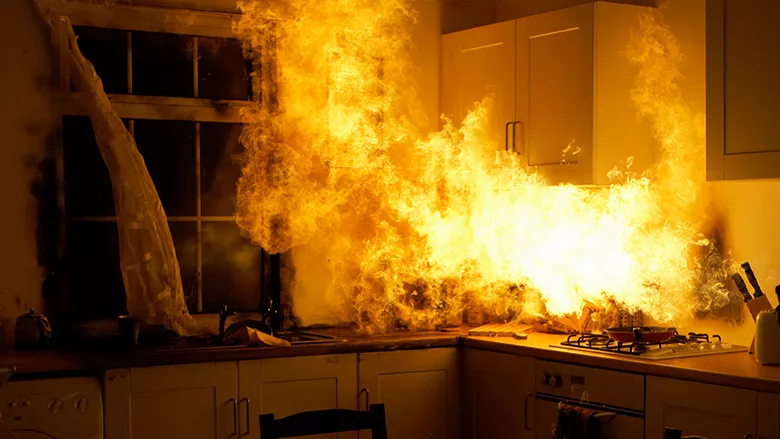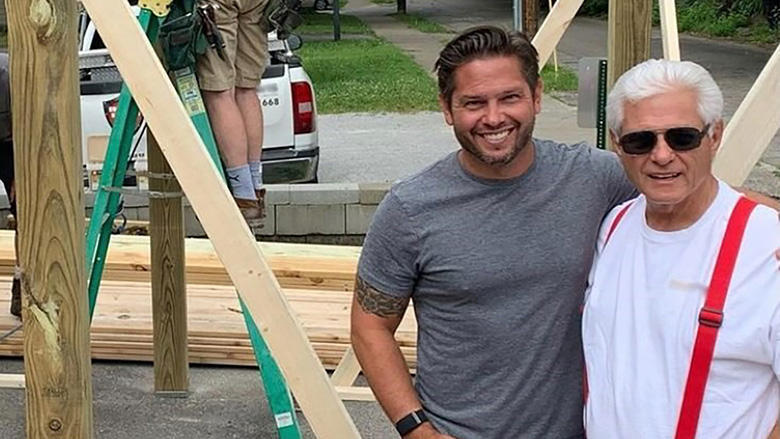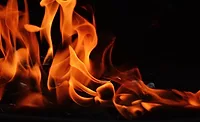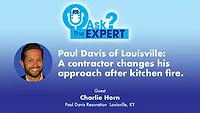Kitchen Fire Teaches Restorer Lesson about Addressing Clients’ Needs

Photo credit: Michael Blann / DigitalVision Via Getty Images
Charlie Horn took over Paul Davis of Louisville earlier this year from his father, Bill Horn, who founded the firm in 1980. Charlie Horn has some some personal experience in dealing with the aftermath of fire damage at a home and he shared that with our magazine.
R&R: What is the history of your firm?
Horn: My father founded the Louisville Paul Davis location in 1980. I was born in ‘79, so Paul Davis has been in my life since birth essentially. We are located in downtown Louisville with approximately 40 full time employees. I held many roles within Paul Davis before taking over as President in 2017.
R&R: What happened with the kitchen fire?
Horn: The fire started on the stove of our home, like so many that we see every day. It was a grease fire that started when hot oil ignited while cooking homemade wontons. By the time I got to the kitchen, the house was starting to fill with black smoke, enough that I had to duck while I made way to the stove. Knowing what the fire department was coming to do in the home to keep the fire from spreading, my only thought once everyone was out and accounted for was “I have to get that pan out of there some way to prevent further damage”.
The fire had already started to communicate to the cabinets above and the other appliances in the kitchen. Running into the kitchen, I grabbed the engulfed pot and made my way to the door leading outside. Flames were a few feet high coming off the burning grease at that point.
As I walked quickly while holding the pan, flames overcame my right hand completely. Once I got outside, I quickly threw the pan into the yard. The cold air and increased oxygen caused the flames to ignite even more, flashing over me. My first thought was to drop and roll, then quickly realized I wasn’t on fire.
To make matters worse, my wife thought I was still inside. I went out the back door, she planned on me coming out the front. Typical lack of/miscommunication during a crisis. She panicked and started to go back in when the fire department showed up and kept her outside. I was still in the back assessing the damage to my right hand, which was “melted together”. The house is now repaired and a good portion of the skin on my right hand was grafted with skin from my leg. The damage could have been much worse…everyone was safe. The lessons in life and in our business are still very strong and real, used daily.
R&R: What did you learn from that helps you when working with clients?
Horn: As I was being driven away in the ambulance, my wife caring for our children and looking for our two dogs and a cat, I said to myself, “We are doing this wrong." We can so quickly lose sight of the human element after a disaster. Our main goal is to reduce stress, not add to it.
Those that have been in the industry for so long can get caught up in the “job” aspect; property owners are left with many emotions, questions, desires, and a need for healing. The trauma is real, whether it’s a small fire, water claim, etc. I understand the need for healing now. Those that have not been through that can only “learn” about it. To live it brings an entire new perspective and a tremendous or need to serve.
We have hired a production coordinator that specializes in healing and walking through the loss process with property owners. Her role is designed to be our “consumer advocate” and care specialist. She communicates with those who have suffered a loss in a way we never have. Going through the process of living through a fire, it was extremely important to me to hire this individual. It’s one of the best hires and business decisions I’ve made.
 Photo credit: Charlie Horn
Photo credit: Charlie Horn
R&R: What are some of the biggest challenges of fire restoration?
Horn: Having true empathy and making sure the property owner knows you care and are there to serve them in their time of need. It's not a job, it's an experience that we have an opportunity to play a major role in. We have a responsibility to that person in need to deliver an exceptional experience during a traumatic time.
R&R: What are some of the best practices?
Horn: Constant communication from Paul Davis with a representative other than the estimator or project manager that is working the claim. Our coordinator is the customer liaison between estimator and PM.
Listen to the property owner as if they are family. That’s easy to say, not always easy to do.
Make the process easy on a person in need, not harder.
Ask property owners how they feel…how are you feeling about the process before, during and after.
Celebrate milestones along the way. Support their needs.
Looking for a reprint of this article?
From high-res PDFs to custom plaques, order your copy today!








